wie viele 350-Watt-Solarmodule werden benötigt, um jährlich 15 kWh zu produzieren
Wenn Sie sich fragen, wie viele 350-Watt-Solarmodule Sie benötigen, um jährlich 15 kWh Strom zu erzeugen, sind Sie hier richtig. Dieser Leitfaden hilft Ihnen, Ihren genauen Bedarf anhand von Standort, Effizienz und Systemdesign zu ermitteln und so die genaueste Antwort für die Planung Ihrer Solaranlage zu erhalten.
- Die Grundlagen von 350-Watt-Solarmodulen verstehen
- 350-Watt-Solarmodule und jährliche Energieproduktion
- Energieproduktion von 350-Watt-Solarmodulen nach Region
- 350-Watt-Solarmodule: Systemverluste und Effizienz
- Wie viele 350-Watt-Solarmodule werden benötigt, um jährlich 15 kWh zu produzieren?
- 350 Watt Solarmodule – Praktische Empfehlungen
- Kostenanalyse für 350-Watt-Solarmodule
- Überlegungen zur Installation von 350-Watt-Solarmodulen
- Wartung von 350-Watt-Solarmodulen für eine Jahresproduktion von 15 kWh
- Erweiterte Größenbestimmung für 350-Watt-Solarmodule
- Umweltauswirkungen von 350-Watt-Solarmodulen
- 350-Watt-Solarmodule im Vergleich zu anderen Größen
- 350-Watt-Solarmodule und Anreize
- Häufig gestellte Fragen zu 350-Watt-Solarmodulen
- Fazit zu 350-Watt-Solarmodulen: Wie viele braucht man für 15 kWh im Jahr?
Die Grundlagen von 350-Watt-Solarmodulen verstehen
Bevor wir uns in die Berechnungen stürzen, ist es wichtig zu verstehen, was 350-Watt-Solarmodule tatsächlich bedeuten und warum sie so häufig für Solarprojekte im privaten und kleinen gewerblichen Bereich verwendet werden.
Was bedeutet „350 Watt“?
Wenn Sie ein 350-Watt-Solarmodul sehen, stellen die 350 Watt die maximale Nennleistung unter Standardtestbedingungen (STC) dar. Dies bedeutet:
Spitzensonnenlicht (typischerweise 1000 W/m²)
Paneltemperatur bei 25°C
Luftmasse von 1,5
In der Praxis werden Sie aufgrund von Wolken, Winkel, Temperatur und anderen Faktoren nicht immer die perfekte Leistung von 350 W erreichen.
Warum 350-Watt-Panels beliebt sind
Diese Panels bieten ein Gleichgewicht zwischen Kosten, Effizienz und Größe:
Ausreichend hohe Wattzahl, um die Anzahl der benötigten Panels zu reduzieren
Günstig durch Massenproduktion
Angemessene Größe (ca. 1,7–2 m²), sodass sie auf die meisten Dächer passen
Für Leute, die fragen „Wie viele 350-Watt-Solarmodule für 15 kWh pro Jahr?“, ist diese Wattzahl eine praktische Wahl.
350-Watt-Solarmodule und jährliche Energieproduktion
Um herauszufinden, wie viele 350-Watt-Solarmodule Sie für 15 kWh pro Jahr benötigen, müssen Sie den Unterschied zwischen Leistung und Energie verstehen:
Leistung : Watt (W) – momentane Leistung
Energie : Kilowattstunden (kWh) – kumulativ über die Zeit
Ein einzelnes 350-W-Panel erzeugt nur bei voller Sonneneinstrahlung 350 W. Im Tages- oder Jahresverlauf hängt die Gesamtenergie von der Anzahl der Sonnenstunden ab.
Tägliche vs. jährliche Produktion
Beispiel:
Wenn Sie täglich 4 Sonnenstunden mit maximaler Sonneneinstrahlung haben:
Tagesenergie = 350 W × 4 = 1,4 kWh
Jährliche Energie = 1,4 kWh/Tag × 365 = 511 kWh
Das sind über 500 kWh pro Jahr aus einem einzigen Panel unter guten Bedingungen – weit mehr als 15 kWh! An den meisten Orten bräuchten Sie also nur einen Bruchteil eines Panels, um jährlich 15 kWh zu produzieren.
Aber gehen wir tiefer in die Materie, um sicherzustellen, dass Sie präzise, ortsspezifische Antworten erhalten.
>>Siehe auch: Womit kann ich meine LFP-Zellen trennen und/oder meine Metallbox auskleiden, um meine Zellen zu schützen?
Energieproduktion von 350-Watt-Solarmodulen nach Region
Ihr Standort hat erhebliche Auswirkungen auf die Solarstromproduktion. Betrachten wir die durchschnittliche Jahresproduktion pro 350-W-Modul in verschiedenen Klimazonen.
Beispielstandorte
Arizona (USA): 5,5–6,5 Sonnenstunden/Tag
~700–830 kWh/Jahr/Panel
Deutschland: 2,5–3,5 Sonnenstunden/Tag
~320–450 kWh/Jahr/Panel
Großbritannien: 2–3 Sonnenstunden/Tag
~250–400 kWh/Jahr/Panel
Indien (gute Gebiete): 4,5–6 Sonnenstunden/Tag
~575–765 kWh/Jahr/Panel
Abschluss
Selbst in sonnenarmen Regionen liefert ein einzelnes 350-W-Modul oft mehr als 15 kWh pro Jahr. Daher benötigen Sie in der Regel nur ein Modul , um diesen Wert zu erreichen, und es bleibt noch genügend Kapazität übrig.
350-Watt-Solarmodule: Systemverluste und Effizienz
Wir können die Verluste in der realen Welt nicht ignorieren:
Wechselrichter-Effizienz: ~95 %
Verdrahtungsverluste: 1–3 %
Staub/Schmutz: 2–5 %
Temperaturverluste: 5–10 %
Ein konservativer Derating-Faktor beträgt ~0,75–0,85.
Beispiel für angepasste Produktion
Gehen Sie von 4 Sonnenstunden/Tag aus:
Ideal = 350 × 4 × 365 = 511 kWh/Jahr
Herabgesetzt bei 0,8 = 409 kWh/Jahr
Das sind immer noch deutlich mehr als 15 kWh/Jahr.
Wie viele 350-Watt-Solarmodule werden benötigt, um jährlich 15 kWh zu produzieren?
Nun die große Antwort: In fast allen Fällen in der Praxis benötigen Sie technisch gesehen weniger als ein 350-Watt-Solarmodul, um jährlich 15 kWh zu erzeugen . Selbst in Gebieten mit geringer Sonneneinstrahlung kann ein einzelnes Modul bequem mehr als 15 kWh/Jahr erzeugen.
Formel
Allgemeine Formel:
Jährliche kWh = Panel-Watt × Spitzensonnenstunden/Tag × 365 × Derating-Faktor
350 Watt Solarmodule – Praktische Empfehlungen
Trotz der Berechnung können Sie nicht 0,05 eines Panels installieren! Folgendes ist zu beachten:
Minimale Systemgröße
Installieren Sie mindestens ein Panel – auch wenn Sie nur 15 kWh/Jahr benötigen. Vorteile:
Einfacheres Design
Kostengünstig (Panels werden in ganzen Einheiten verkauft)
Bleibt zusätzliche Energie für andere Zwecke übrig
Batteriespeicher
Wenn Sie nur zeitweise 15 kWh/Jahr benötigen (z. B. zum Beleuchten eines Schuppens), sollten Sie das einzelne 350-Watt-Solarpanel mit einer kleinen Batteriebank kombinieren:
12V 100Ah Batterie speichert ~1,2 kWh
15 kWh/Jahr = ~1,25 kWh/Monat
Eine Batterie kann die Versorgung auch in bewölkten Wochen glätten.
Kostenanalyse für 350-Watt-Solarmodule
Sie denken vielleicht, „ein Panel ist billig“, aber die Gesamtkosten des Systems umfassen:
Panel selbst: ~100–250 $
Montage: 50–150 $
Wechselrichter (bei Netzanschluss oder Wechselstromlast): 100–300 $
Laderegler (netzunabhängiger Gleichstrom): 30–100 $
Batterie (falls erforderlich): 100–500 $
Bei einer so geringen Jahreslast ist das Panel oft der günstigste Teil.
Überlegungen zur Installation von 350-Watt-Solarmodulen
Dachfläche
Jedes Paneel ≈ 1,7–2 m²
Ein Panel lässt sich leicht an fast jeder Struktur anbringen
Ausrichtung und Neigung
Südlage (nördliche Hemisphäre)
Nach Norden ausgerichtet (südliche Hemisphäre)
Neigung für Breitengrad optimiert
Schon kleine Abweichungen reduzieren die Jahresproduktion, planen Sie also sorgfältig.
Wartung von 350-Watt-Solarmodulen für eine Jahresproduktion von 15 kWh
Die jährliche Produktion einer so geringen Menge macht eine Wartung nicht überflüssig:
Reinigen Sie die Paneele alle paar Monate
Überprüfen Sie die Verkabelung und Anschlüsse
Überprüfen Sie den Batteriezustand, wenn Sie vom Netz getrennt sind
Schon ein einzelnes 350-Watt-Solarmodul verdient die richtige Pflege, um zuverlässig 15 kWh zu liefern.
Erweiterte Größenbestimmung für 350-Watt-Solarmodule
Wenn Sie Ihr System zukunftssicher machen möchten, sollten Sie Folgendes bedenken:
Installieren Sie zwei Panels, auch wenn Sie nur eines benötigen
Zusätzliche Energie für zukünftige Lasten
Redundanz
Modulares Design
Fügen Sie bei Bedarf weitere Panels hinzu
15 kWh/Jahr sind für Solarenergie wenig. Die meisten privaten Anlagen zielen auf Tausende von kWh/Jahr ab, Sie haben also noch Spielraum nach oben.
Umweltauswirkungen von 350-Watt-Solarmodulen
Ihr kleines System reduziert dennoch den CO2-Ausstoß:
Netzstrom oft ~0,5 kg CO₂/kWh
15 kWh/Jahr ≈ 7,5 kg CO₂ vermieden
Auch wenn es nur ein kleiner Schritt ist, ist es ein Schritt in Richtung Nachhaltigkeit. Schon die Installation eines einzigen 350-Watt-Solarmoduls kann Ihnen helfen, Ihre Umweltziele zu erreichen.
>>Siehe auch: Ist es sicher, Blei-Säure-Batterien auf 20 % zu entladen?
350-Watt-Solarmodule im Vergleich zu anderen Größen
Sie fragen sich vielleicht:
Warum nicht 250 W oder 450 W?
350 W ist ein mittelgroßer Sweet Spot:
Die Kosten pro Watt sind niedrig
Kompatibel mit vielen Wechselrichtern
Einfach zu handhaben und zu installieren
Wenn Ihr Lieferant nur über 400-W-Panels verfügt, benötigen Sie sogar noch weniger, um 15 kWh/Jahr zu erreichen.
350-Watt-Solarmodule und Anreize
Prüfen Sie lokale Anreize:
Steuergutschriften
Rabatte
Nettomessung
Sogar ein kleines System mit einem 350-Watt-Solarmodul kann für Anreize in Frage kommen, die die gesamten Installationskosten ausgleichen.
Häufig gestellte Fragen zu 350-Watt-Solarmodulen
Kann ein einzelnes 350-Watt-Solarpanel mein Haus mit Strom versorgen?
Nicht allein – es könnte 300–800 kWh/Jahr produzieren. Ein durchschnittlicher Haushalt verbraucht 8.000–12.000 kWh/Jahr. Sie bräuchten 10–30 Paneele.
Kann ich nur einen Teil eines Panels kaufen?
Nein, die Paneele werden als ganze Einheiten verkauft. Sie können nicht 0,05 Paneele kaufen.
Was passiert mit der zusätzlichen Energie?
Bei Netzanbindung: Export gegen Kredit.
Wenn Sie vom Stromnetz getrennt sind: In Batterien speichern oder entsorgen.
Fazit zu 350-Watt-Solarmodulen: Wie viele braucht man für 15 kWh im Jahr?
Zusammenfassend, wenn Sie fragen:
Wie viele 350-Watt-Solarmodule werden benötigt, um jährlich 15 kWh zu produzieren?
Die Antwort lautet: Normalerweise reicht weniger als ein Panel ! Da Sie jedoch keine Teile eines Panels kaufen können, müssen Sie mindestens ein Panel installieren. Dieses einzelne Panel übertrifft Ihr Ziel von 15 kWh/Jahr deutlich und liefert Ihnen überschüssige Energie für andere kleinere Anwendungen, zur Speicherung oder für Netzgutschriften.
Die Investition in 350-Watt-Solarmodule für kleine Lasten ist im Hinblick auf Nachhaltigkeit, Belastbarkeit und Kosteneinsparungen im Laufe der Zeit immer noch eine kluge Entscheidung.
Selbst bei einem so geringen Bedarf erzielen Sie durch sorgfältige Planung die besten Ergebnisse – von der Auswahl hochwertiger Hardware bis hin zur richtigen Ausrichtung und Wartung.
Wenn Sie bereit sind, loszulegen, prüfen Sie die örtlichen Anbieter für 350-Watt-Solarmodule und sehen Sie, wie einfach es ist, dieses Ziel von 15 kWh/Jahr zu erreichen (und zu übertreffen)!

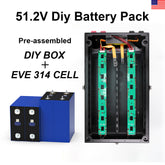

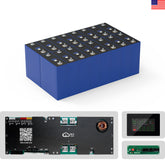

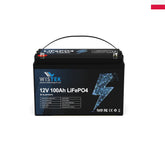
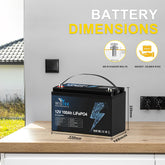

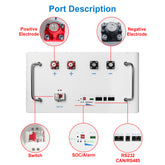
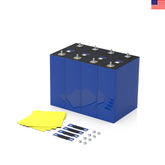
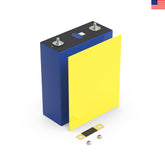
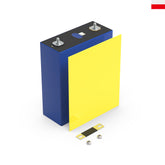

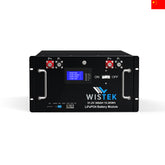
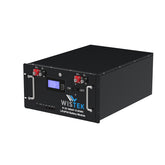
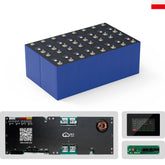








Leave a comment
All blog comments are checked prior to publishing